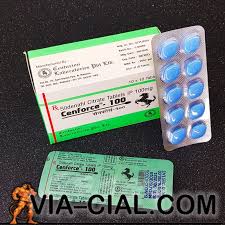
Sredstva Za Sproscanje Misic: Understanding Muscle Relaxants
Muscle relaxants, or Sredstva Za Sproscanje Misic https://lekarnaskupaj.si/sredstva-za-sproscanje-misic/, play a crucial role in managing pain and discomfort related to muscle spasms, strains, and other musculoskeletal conditions. These medications are typically classified into two categories: centrally acting muscle relaxants and peripherally acting muscle relaxants. Understanding how these medications work, their side effects, and their applications is essential for both patients and healthcare providers.
Types of Muscle Relaxants
Centrally Acting Muscle Relaxants
Centrally acting muscle relaxants act on the central nervous system, specifically the brain and spinal cord, to reduce muscle tone and spasms. Common examples include:
- Carisoprodol: Often prescribed for short-term use, it can help alleviate pain from acute musculoskeletal conditions.
- Baclofen: This medication is frequently used in treating spasticity associated with multiple sclerosis or spinal cord injuries.
- Diazepam: Widely known for its sedative effects, diazepam can also be effective in reducing muscle spasms.
Peripherally Acting Muscle Relaxants
Unlike centrally acting drugs, peripherally acting muscle relaxants target the nerves at the neuromuscular junction. They are primarily used in surgical settings or for patients requiring intensive care. Examples include:

- Botulinum toxin: This powerful neurotoxin can provide relief from severe muscle spasms by preventing nerve signals from reaching muscles.
- Dantrolene: Used in conditions like malignant hyperthermia, it works directly on muscle cells to inhibit contraction.
Mechanism of Action
The mechanism through which muscle relaxants exert their effects varies between centrally and peripherally acting agents. Centrally acting muscle relaxants typically enhance the inhibitory neurotransmitter gamma-aminobutyric acid (GABA), thus leading to reduced excitability of muscle fibers. Peripherally acting drugs disrupt the transmission of signals from nerves to muscles, leading to muscle relaxation without affecting the central nervous system.
Indications for Use
Muscle relaxants are most commonly prescribed for conditions that involve muscle spasms and pain, such as:
- Acute back pain
- Cervical and lumbar sprains
- Multiple sclerosis-related spasticity
- Injuries from sports or physical activities

Additionally, they are sometimes utilized in procedures requiring anesthesia, where muscle relaxation is necessary.
Side Effects
While muscle relaxants can effectively alleviate discomfort, they are not without side effects. Some common reactions include:
- Drowsiness and fatigue
- Dizziness or confusion
- Dry mouth
- Nausea
Some of these medications may also lead to dependency if used over an extended period, raising concerns about long-term use and withdrawal symptoms.
Precautions and Considerations
Patients should always consult with a healthcare provider before starting any muscle relaxant. Important considerations include:
- Potential drug interactions with medications for anxiety, depression, or other neurological conditions
- Underlying health conditions such as liver disease, which could affect drug metabolism
- Pregnancy or breastfeeding status
Regular follow-ups with healthcare professionals can help in monitoring the efficacy and safety of the prescribed muscle relaxants.
Alternatives to Muscle Relaxants
For some individuals, non-pharmacological approaches may be preferable. These methods include:
- Physical therapy: Strengthening and stretching exercises can alleviate muscle tension.
- Heat and cold therapy: Applying heat or cold to the affected area can be soothing.
- Relaxation techniques: Practices such as yoga and meditation can reduce overall muscle tension.
Conclusion
Sredstva za sproscanje misic can provide significant relief from muscle spasms and associated pain. However, their use must be carefully considered, weighing the benefits against potential side effects. The decision to use muscle relaxants should involve a comprehensive discussion between a patient and their healthcare provider, emphasizing the importance of personalized treatment plans tailored to individual needs and health conditions. By understanding these treatments, patients can make informed decisions about their healthcare options and work towards effective muscle relaxation and recovery.



Kommentare von reda